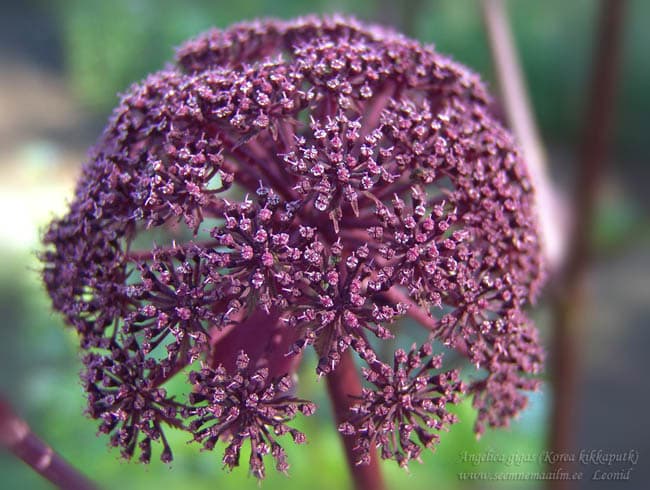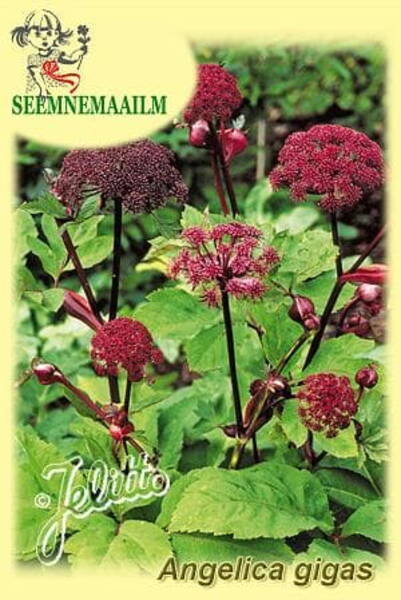Your shopping cart is empty!
Korean angelica (Giant Angelica, Archangel parsnip)
Giant Angelica (Korean angelica, Archangel Parsnip) - Angelica gigas.
A spectacular perennial specimen plant.
Winner of the Gold Medal at Plantarium 1993 in Boskoop, Netherlands.
Native to Korea.
Family: Umbelliferae.
The eye-catching burgundy-dark stems reach 120-140 cm (up to 180 cm) in height, with dark green foliage forming a bush 45-80 cm in diameter. Bold, deep plum-colored rounded buds open into extraordinary dome-shaped reddish-purple inflorescences that attract butterflies. Blooms from late July through autumn.
This plant requires ample space. Prefers fertile soil with a pH of 5.8-6.8.
Thrives in light partial shade and rich, moist (but not waterlogged) soil.
Hardiness: Zones 4-9 (withstands temperatures down to -34°C).
Soil Requirement: any good garden soil, pH 5.8 - 6.8.
Perfect for garden focal points, naturalistic plantings, and butterfly gardens. Makes a striking addition to mixed borders and waterside plantings.
A spectacular perennial specimen plant.
Winner of the Gold Medal at Plantarium 1993 in Boskoop, Netherlands.
Native to Korea.
Family: Umbelliferae.
The eye-catching burgundy-dark stems reach 120-140 cm (up to 180 cm) in height, with dark green foliage forming a bush 45-80 cm in diameter. Bold, deep plum-colored rounded buds open into extraordinary dome-shaped reddish-purple inflorescences that attract butterflies. Blooms from late July through autumn.
This plant requires ample space. Prefers fertile soil with a pH of 5.8-6.8.
Thrives in light partial shade and rich, moist (but not waterlogged) soil.
Hardiness: Zones 4-9 (withstands temperatures down to -34°C).
Soil Requirement: any good garden soil, pH 5.8 - 6.8.
Perfect for garden focal points, naturalistic plantings, and butterfly gardens. Makes a striking addition to mixed borders and waterside plantings.
Seeds exhibit uneven and prolonged germination. Requires double stratification:
-
4-6 weeks at +5°C (cold period)
-
4-10 weeks at room temperature (warm period).
Germination may occur over 2 years.
Important: seeds are light-sensitive – do not bury deeply in soil!













